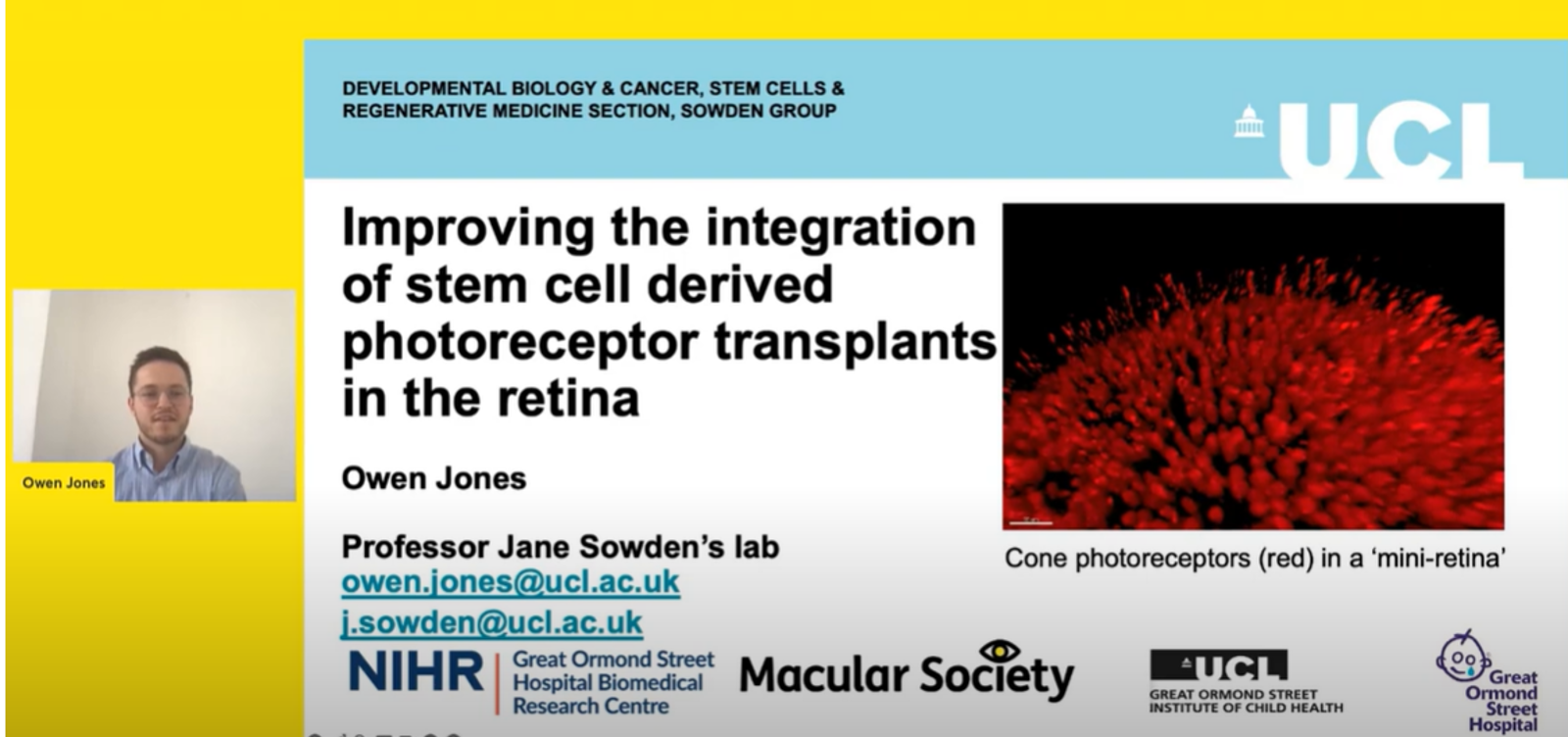Improving the integration of stem cell transplants in the retina

Prof Jane Sowden, University College London - £100,000
Stem cell therapy is a promising new area of research for a treatment for macular disease, but it is still in the experimental stage. It involves growing new retinal cells, developed from stem cells, which could then be implanted into the macula to replace lost or damaged cells.
This research project focussed on the transplantation of the light-sensing cells, known as photoreceptors.
What was the problem?
While a lot of research is going on into using eye cells developed from stem cells to treat macular disease, it is still very difficult to do.
In order to successfully transplant new light-sensing cells and potentially restore sight, the photoreceptors need to connect and work with the other cells of the retina.
Studies have been able to show that transplanted cells can survive but we need to find ways to improve their connections to optimise their potential to restore vision.
What did the project achieve?
In this project, cone and rod photoreceptors were grown from stem cells in the laboratory and different conditions were tested to see which produced the highest number of cone photoreceptors. Then conditions were found that made it possible to take photographs of the way that the photoreceptor cells grow out towards other cells, which is the first step to making new connections.
The photoreceptors were observed to send out finger-like projections and small molecules were identified that can be used to enhance this process.
What’s next?
The goal of developing a photoreceptor replacement therapy to restore sight has moved a step closer. This could lead to a new line of treatment for people experiencing sight loss from a range of conditions.
The next step is to undertake further research on the way in which photoreceptors grow and make connections to support progress towards clinical trials.
Want to know more?
To learn more about this project, you can watch the video from our 2024 Macular Disease Conference with PhD student Owen Jones below.
See our other projects
Since 1987 the Macular Society has invested around £10 million in over 100 research projects.
Explore more research
Beating macular disease through funding medical research and improving the lives of those living with macular disease.
Get the latest research news from the Macular Society
To hear about life-changing research and treatments, subscribe to our monthly enewsletter today. Together we can Beat Macular Disease.
Sign up to our free email newsletter




